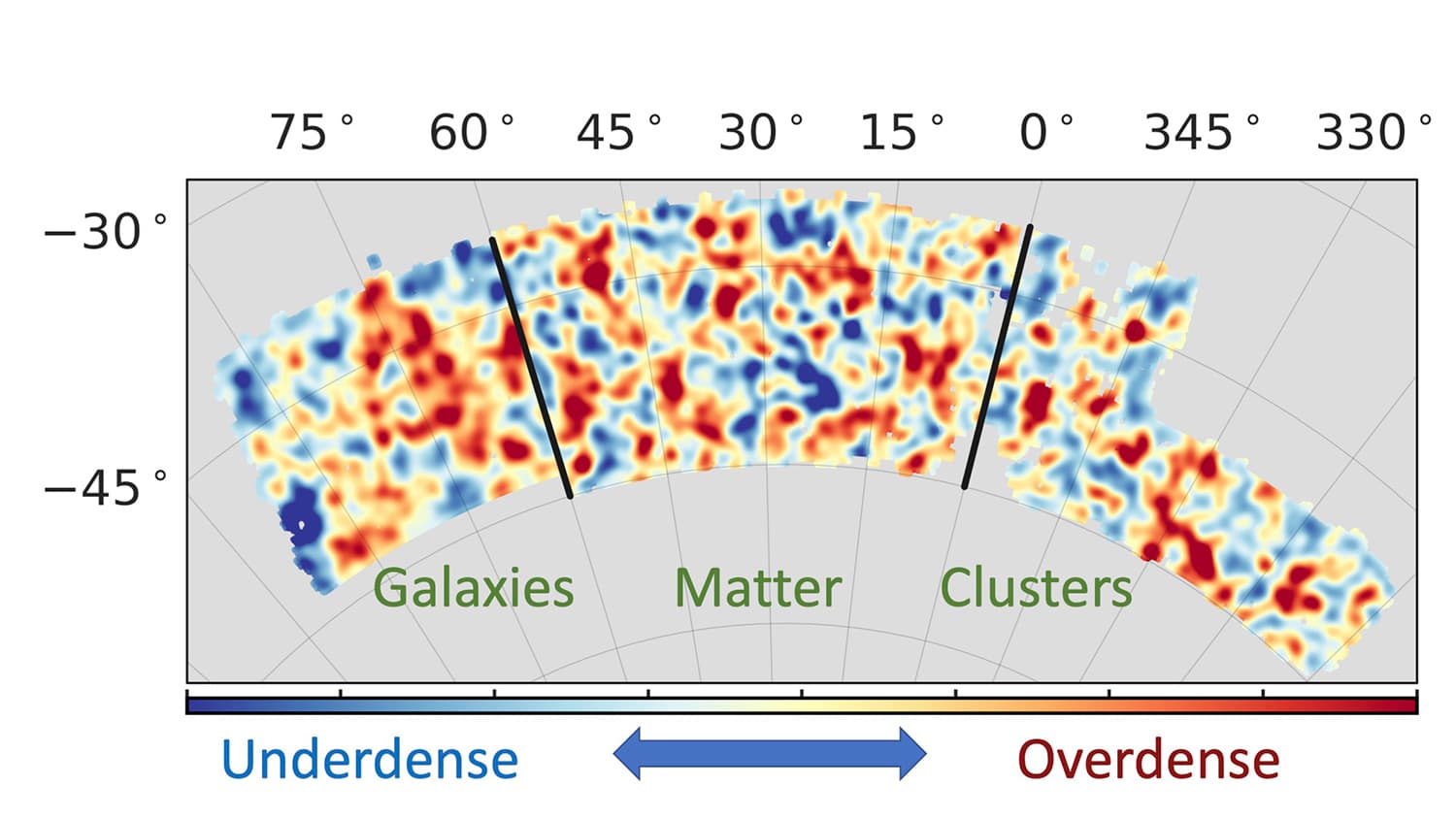
Our Universe is continually expanding. The reason behind this expansion is still unknown.
Scientists at the Dark Energy Survey (DES) have a way to find out the reason. By combining measurements of the distribution of matter, galaxies, and galaxy clusters, it is possible to determine what is going on.
Achieving this goal is quite tricky. So scientists from the Department of Energy’s SLAC National Accelerator Laboratory, Stanford University, and the University of Arizona have come up with a solution.
In their new analysis, scientists uncovered more precise measurements of the average density of matter and its propensity to clump together.
Chun-Hao To, a lead author on the new paper and a graduate student at SLAC and Stanford working with Kavli Institute for Particle Astrophysics and Cosmology Director Risa Wechsler, said, “It is one of the best constraints from one of the best data sets to date.”
Typically, scientists could put all data together to improve their estimates. Although, there is a problem. The distributions of matter, galaxies, and galaxy clusters are all closely related. Scientists need to take this relationship very seriously otherwise, they would end up with ‘double counting,’ placing too much weight on some data and not enough on others.
To avoid such mishandling of data, a new model was developed to properly consider connections in the distributions of all three quantities: matter, galaxies, and galaxy clusters. In doing so, they were able to produce the first-ever analysis to properly combine all these disparate data sets to learn about dark matter and dark energy.
To said, “Adding that model into the DES analysis has two effects. First, measurements of the distributions of matter, galaxies, and galaxy clusters tend to introduce different kinds of errors. Combining all three measurements makes it easier to identify any such errors, making the analysis more robust. Second, the three measurements differ in how sensitive they are to the average density of matter and its clumpiness. As a result, combining all three can improve the precision with which the DES can measure dark matter and dark energy.”
In this new study, scientists applied their unique methods to the first year of DES data and sharpened previous estimates’ precision for matter’s density and clumpiness.
To said, “We can incorporate matter, galaxies, and galaxy clusters simultaneously in their analysis, adding in supernova data will be relatively straightforward since that kind of data is not as closely related with the other three.”
“The immediate next step is to apply the machinery to DES Year 3 data, which has three times larger coverage of the sky. This is not as simple as it sounds: While the basic idea is the same, the new data will require additional efforts to improve the model to keep up with the higher quality of the newer data.”
Wechsler said, “This analysis is fascinating. I expect it to set a new standard in the way we can analyze data and learn about dark energy from large surveys, not only for DES but also looking forward to the incredible data that we will get from the Vera Rubin Observatory’s Legacy Survey of Space and Time in a few years.”
Journal Reference:
- C. To, E. Krause et al. Dark Energy Survey Year 1 Results: Cosmological Constraints from Cluster Abundances, Weak Lensing, and Galaxy Correlations. Physical Review Letters, 2021; 126 (14) DOI: 10.1103/PhysRevLett.126.141301
Continue reading A new window into dark energy on Tech Explorist.
0 comments:
Post a Comment